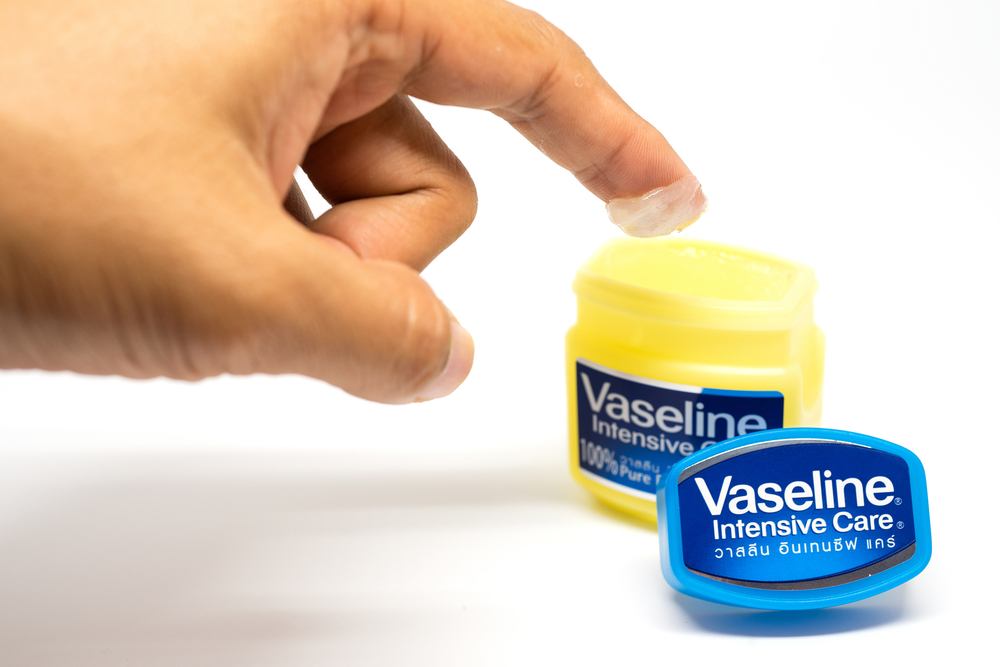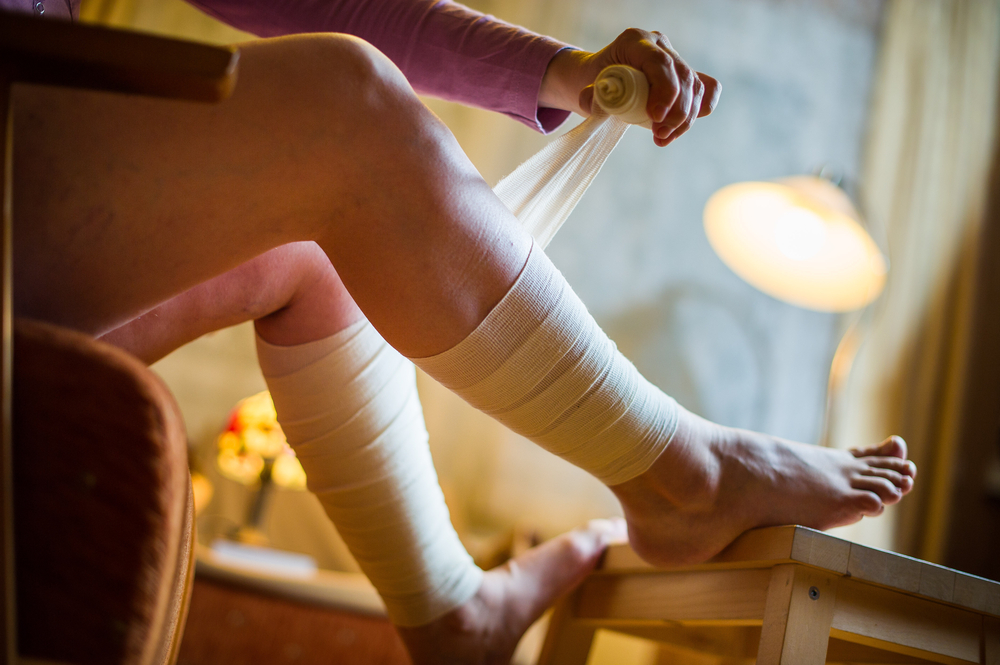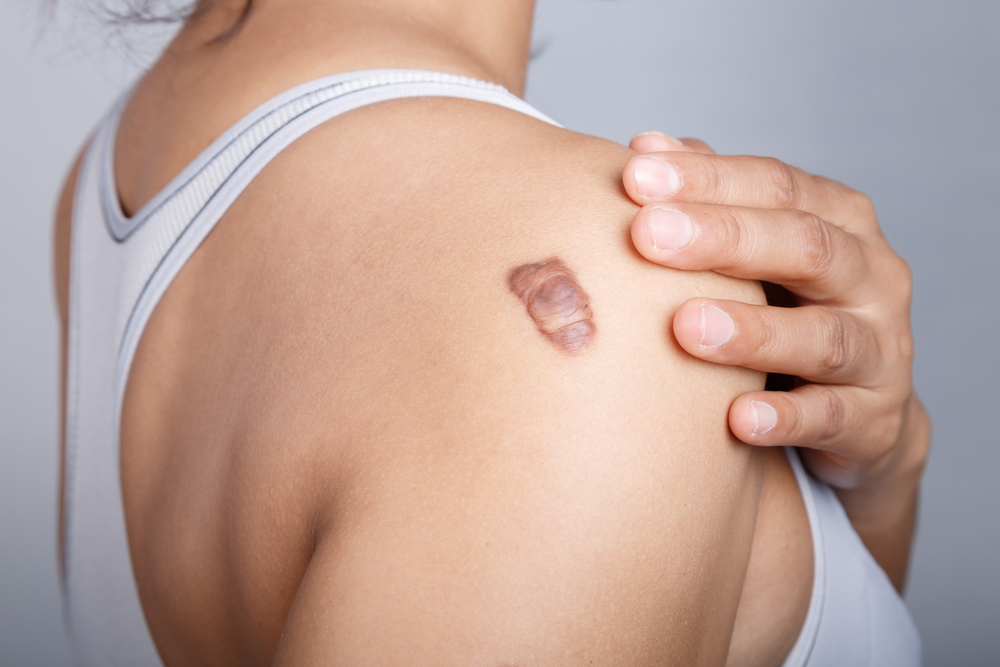- Vaseline is widely endorsed by dermatologists as a moisturizer and healing balm.
- Beauty bloggers claim a variety of other benefits—some true, some false.
- Vaseline is made from petroleum, however no scientific study links it with cancer.
The Gist of the Jelly — A Brief History of Vaseline
Vaseline is a brand name for petroleum jelly, a substance discovered not long after America’s first oil well opened in 1858. Workers noticed a thick, odorless residue accumulating on drilling machinery. It seemed to help heal their small cuts and burns.
This caught the attention of chemist Robert Chesebrough, who spent years refining the chemical before eventually marketing it as a household topical medicine. 140 years later, that marketing campaign continues.
Can Vaseline Prevent Scars?
As this origin story reveals, Vaseline began as a balm for healing cuts, burns and other small wounds. In fact, it’s still recommended by dermatologists for this use today. Petroleum jelly is often applied to skin after cutaneous surgery (i.e. when a skin growth or lesion is removed). This keeps the wounded area moist, helping to prevent a scab from forming. Wounds with scabs are slower to heal and more likely to leave a scar.
Vaseline keeps wounds moist because it is occlusive. That means it acts as a barrier, preventing water from evaporating off the skin’s surface. If that sounds like it might also make the product a great skin moisturizer, that’s because it does—with certain caveats.
Skin Hydration — Is Vaseline Still a Top Choice Moisturizer?
The consensus amongst dermatologists is that Vaseline remains an excellent moisturizer, despite the many options available to today’s consumers.
The American Academy of Dermatology (AAD) recommends it for rough, cracked feet, elbows, and hands; dry cuticles and lips; diaper rash; and peeling nails. For best results, it should be applied after bathing, while the skin is still damp so the moisture is locked into it.
A common online tip for moisturizing feet suggests applying it before bed, then covering them with heavy socks until morning. Dr. Caroline A. Chang, Clinical Assistant Professor of Dermatology at Alpert Medical School of Brown University endorses this particular beauty hack. She also loves Vaseline as a lip balm.
Dr. Chang sees petroleum jelly as a “truly the top-of-the-line“ moisturizer, but concedes its greasy texture won’t appeal to everyone. One of the advantages of more expensive moisturizers, she says, is that they may offer a more tolerable texture. Texture is less of a consideration for feet and hands, but it definitely becomes a factor with the face.
Can Vaseline Be Used on the Face?
Vaseline is a heavy-duty choice and may not be ideal for use as a day-to-day facial moisturizer. The same quality that makes it so good at sealing in moisture can also seal in less desirable things like dirt and impurities. While safe and equally effective on the face, skin should be always cleaned beforehand.
One thing Vaseline’s occlusive barrier will not seal off, however, are the skin’s pores. Contrary to a common misconception, the product is non-comedogenic — meaning it penetrates the skin but leaves pores free.
The American Osteopathic College of Dermatology (AOCD) nevertheless recommends people with acne avoid using Vaseline on their face as it may worsen breakouts. Dr. Gabriele Weichert of Synergy Medical Aesthetics in Nanaimo, BC also won’t propose it as a facial moisturizer for this reason: “Vaseline can obstruct hair follicles and lead to acne breakouts on the face, I never recommend it for facial use in teens or adults unless they already like using it.”
Acne breakout is one of very few potential irritations from petroleum jelly use. The product is hypoallergenic, another positive attribute behind its ongoing popularity. As Dr. Chang explains, “Vaseline has no preservatives or additional ingredients, therefore there is a low likelihood of having a reaction to it. It’s a fairly inert substance.”
Some beauty blogs, including one on the product’s website, encourage trying Vaseline as a base ingredient in face masks in combination with natural ingredients like aloe vera, spices, yoghurt or honey. Keeping in mind dermatologists’ reservations about heavy use on the face, any experimentation with a Vaseline mixture is best done by spot checking it first, and avoided entirely by those with sensitive skin or acne.
Can Vaseline Enhance the Eyes or Help Grow Eyelashes?
The Internet has plenty of suggestions for Vaseline use around the eyes. A quick Google search reveals a multitude of beauty benefits to be had, including voluminous and faster-growing eyelashes, reduced bags and dark circles under the eyes and less unruly eyebrows. Some even propose it as an eye makeup base or highlighter.
Regardless of aesthetic results, a little caution is warranted with the eyes as with the face, as there may also be a small risk of irritation. Dr. Chang notes that pores around the eyes are more delicate, so there is a risk of blepharitis. The American Academy of Dermatology (AAD) recommends using only a very small amount on eyelids, if dry.
Board-certified facial plastic surgeon Dr. Benjamin Stong of Kalos Facial Plastic Surgery, LLC refutes the claim that Vaseline can do much for eyelashes: “Vaseline does not cause more robust eyelash growth. I would suggest Latisse for the best non-surgical eyelash treatment.”
While there is no scientific basis for the claim Vaseline will remove under-eye circles or bags, there’s certainly no harm in trying a little on wayward eyebrows.
Vaseline and Wrinkles – Is There Any Anti-Aging Effect?
Everyone knows hydrated skin is key to a youthful look, and Vaseline remains the moisturizer against which all other moisturizers are judged due to its purity and efficacy. Might it have other anti-aging properties?
Some bloggers answer with a resounding “yes”—in particular, it’s been suggested that nightly application of Vaseline helps to prevent wrinkles.
A recent CNN article debunks this idea, with Chicago dermatologist Dr. Kevin Pinksi weighing in: “Petroleum jelly can make wrinkles less apparent because it’s adding moisture to the skin, which softens lines, but it can’t actually prevent aging.” Dr. Strong agrees: “It does not prevent or reverse the signs of aging. Try Tretinoin or stem-cell creams for effective anti-aging products.”
The Academy of Dermatology (AAD) advocates skin creams with vitamin A (retinol) and alpha hydroxy acid in the fight against aging skin.
Is Vaseline Safe? Cancer and Other Health Concerns
Cheap, hypoallergenic, effective both as moisturizer and healing balm—does Vaseline have any downsides when it comes to your health?
Petroleum jelly is a refined petroleum byproduct. That link with the oil industry understandably causes concern among health-conscious consumers, as crude petroleum certainly shouldn’t be slathered all over the body.
Internet opinion is divided on Vaseline’s safety, as it tends to be with many modern-day cosmetics and mass-produced chemicals. In particular, some consumers worry long-term use might increase one’s risk for cancer. When properly refined, petrolatum is approved for use in cosmetics by the FDA and its European Union counterpart, the EMA.
The introduction of contaminants known to be carcinogenic (for example, polycyclic aromatic hydrocarbons, or PHA’s) is possible during the chemical refining process if the procedure isn’t handled properly. Regulatory bodies rigorously examine consumer products looking for such contaminants before approving their use. Eco-conscious consumers, however, may wish to explore alternative products less dependent on the fossil fuel industry and preferable for that reason.
The Takeaway – The Pros and Cons of Vaseline in a Beauty Regimen
Vaseline is an effective moisturizer that enjoys a broad endorsement from dermatologists. It’s particularly good for lips, repairing very dry and cracked skin and helping to prevent potential scars originating from small wounds. It contains no additives or fragrances, meaning it usually won’t irritate the skin (just avoid applying it too close to the eyes and use sparingly on the face).
Vaseline won’t prevent signs of aging and some people will always prefer a skin cream with a lighter texture, especially for the face. But due to the undeniable results it delivers combined with its affordability, petroleum jelly rightly maintains its privileged place in millions of modern cosmetic kits.









